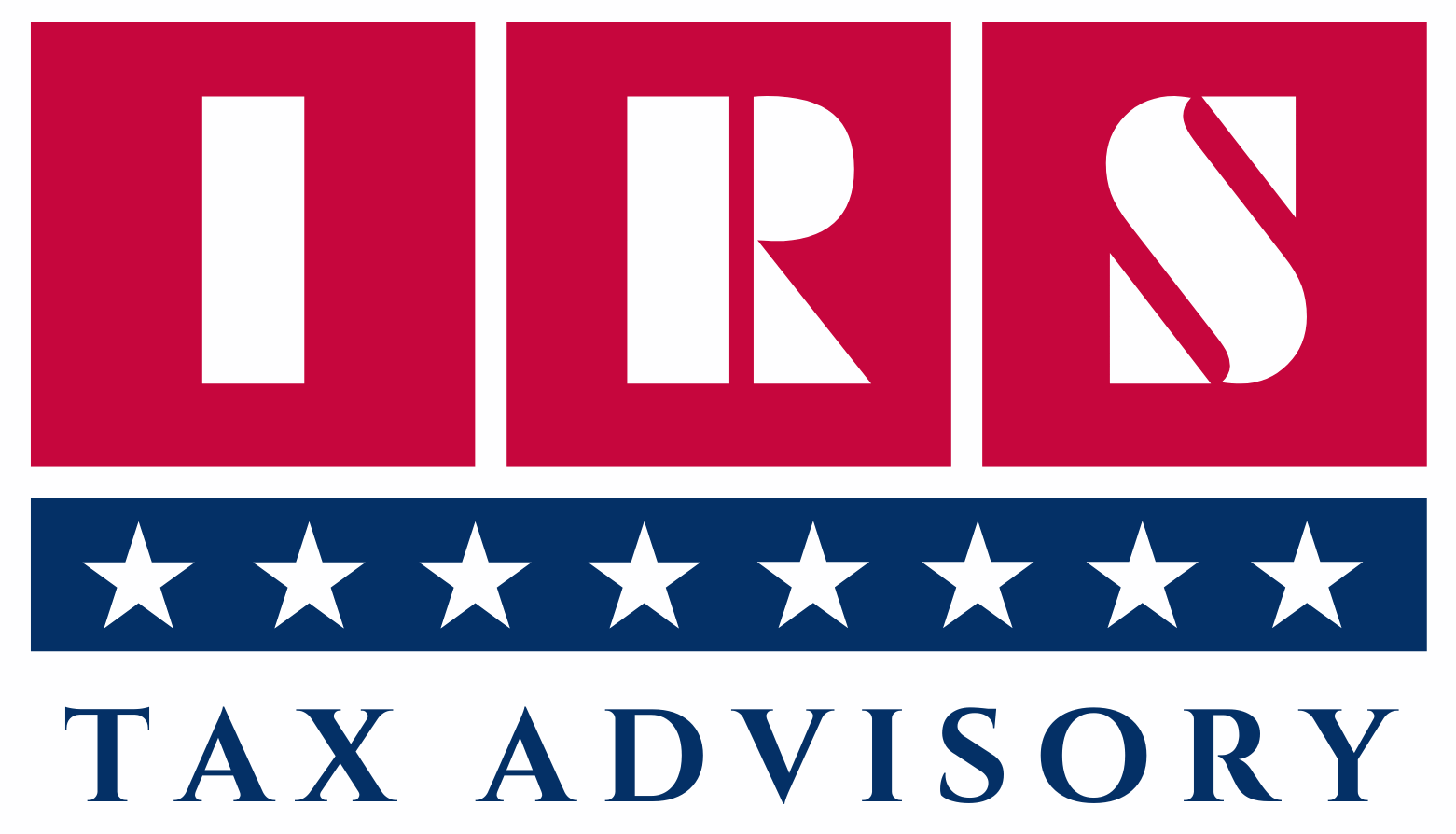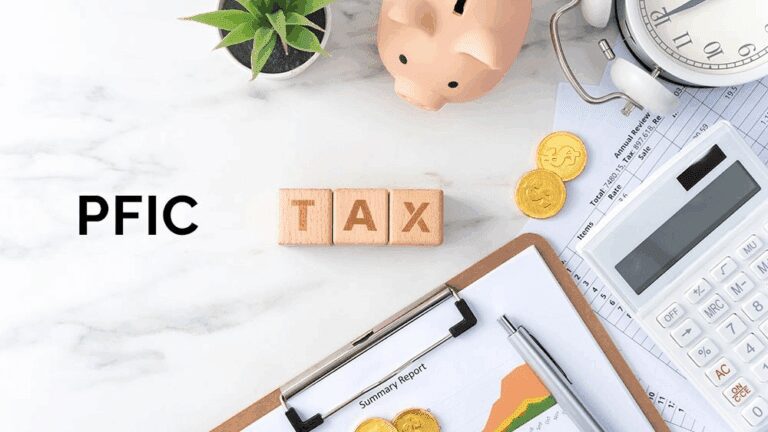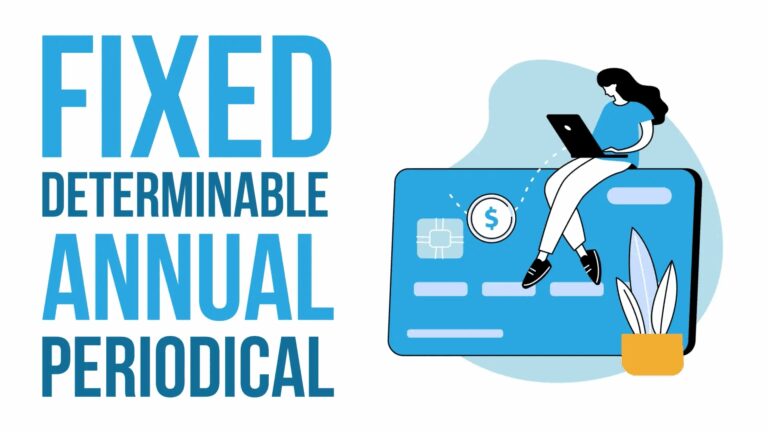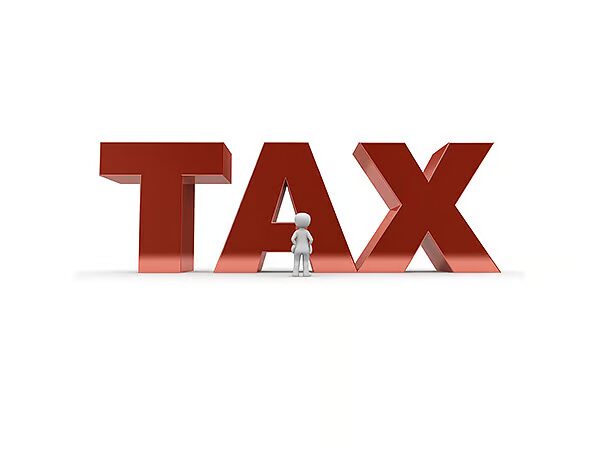Section 163j– Best Detailed Explanation
Table of Contents
Internal Revenue Code (IRC) Section 163j limits the amount of business interest expense a taxpayer can deduct in a tax year. This provision applies to corporations, partnerships, and sole proprietors, and is critical for businesses with significant borrowing.
What Is Section 163j?

Section 163(j) is a tax regulation introduced as part of the Tax Cuts and Jobs Act of 2017 that limits the amount of business interest expense a taxpayer can deduct in a given tax year. Specifically, it restricts the deductible business interest to 30% of the taxpayer’s Adjusted Taxable Income (ATI), plus any business interest income and floor plan financing interest.
The rule is designed to curb excessive interest deductions by businesses with high debt levels, promoting more balanced tax reporting and preventing aggressive tax avoidance through leverage. While the limitation applies broadly to corporations, partnerships, and sole proprietors, small businesses with average annual gross receipts below a certain threshold are exempt.
Additionally, the CARES Act temporarily increased this limit to 50% of ATI for tax years 2019 and 2020, providing relief during the economic challenges caused by the COVID-19 pandemic. Overall, Section 163(j) plays a crucial role in how businesses manage debt financing and tax planning strategies.
Enacted under the Tax Cuts and Jobs Act (TCJA) of 2017, and modified by the CARES Act, Section 163(j) restricts the deduction of business interest expense to:
30% of the taxpayer’s Adjusted Taxable Income (ATI)
- Business Interest Income
- Floor plan financing interest (if applicable)
Exception: For tax years 2019 and 2020, the limit was temporarily increased to 50% of ATI (under the CARES Act).
Key Concepts Under IRC Section 163j
Understanding Section 163(j) requires a clear breakdown of its core components. This provision impacts how businesses handle interest deductions, and navigating it correctly is essential for tax compliance and strategic planning. Below are the key concepts every taxpayer should know:
1. Business Interest Expense
Business interest expense refers to the cost of borrowing for business operations. This includes interest paid or accrued on loans, lines of credit, or other forms of business-related debt. Under Section 163(j), only a portion of this expense may be deductible, depending on the taxpayer’s Adjusted Taxable Income (ATI).
2. Business Interest Income
Business interest income includes interest earned from business-related activities, such as interest on receivables or financial products held as part of the business. This income is added to the allowable limit for interest expense deductions and can offset interest expense amounts.
3. Adjusted Taxable Income (ATI)
ATI is the benchmark used to calculate the 30% limitation. It’s similar to EBITDA for tax years before 2022 and EBIT for years after:
- 2018–2021: ATI = Taxable income before interest, depreciation, and amortization (EBITDA-like)
- 2022 onward: ATI = Taxable income before interest (EBIT-like)
The shift to EBIT in 2022 generally reduces the deductible limit, impacting businesses with large depreciation or amortization expenses.
4. Floor Plan Financing Interest
Floor plan financing interest is a special category for businesses like automobile or equipment dealers that finance inventory. Unlike regular interest, floor plan interest is fully deductible and not subject to the 30% limitation, but it must be properly identified and reported.
5. Excess Interest Carry forward
If a business’s interest expense exceeds the allowed limit under Section 163(j), the disallowed amount is not lost. Instead, it can be carried forward indefinitely and deducted in a future year, subject to the same limitations.
6. Small Business Exemption
Businesses with average annual gross receipts of $29 million or less (for 2023) over the previous three years are exempt from Section 163(j). This exemption is determined under the gross receipts test outlined in IRC Section 448(c).
7. Reporting Requirements – Form 8990
Taxpayers subject to Section 163(j) must file Form 8990 to calculate and report their allowable interest deduction and carryforward. This form is critical for IRS compliance and must be attached to the taxpayer’s annual return.
Summary
Section 163(j) affects how much interest a business can deduct and hinges on a few core concepts: business interest, ATI, floor plan financing, and reporting rules. Properly understanding and applying these elements helps businesses maximize deductions, maintain IRS compliance, and strategically manage debt.
Who Is Subject to Section 163(j)?
Section 163(j) of the Internal Revenue Code applies to a wide range of taxpayers who incur business interest expenses. It is designed to limit the deduction of interest on business debt, affecting both small and large enterprises depending on their financial structure and revenue thresholds.
Entities Generally Subject to Section 163(j):
The limitation applies to any taxpayer with a trade or business, including:
- C Corporations – Large corporations that typically have high levels of debt financing.
- S Corporations – While S Corps are pass-through entities, the limitation still applies at the entity level.
- Partnerships – Partnerships calculate the limitation at the entity level and pass excess interest to partners as carryforwards.
- Sole Proprietorships– Business interest limits apply at the individual level.
- Trusts and Estates – If they operate a trade or business and have interest expense, they are also subject to the limitations.
Exceptions: Who Is Not Subject to Section 163(j)
Certain businesses and entities are exempt from the limitation, including:
Small Businesses
Businesses that meet the gross receipts test under IRC Section 448(c) are exempt.
As of 2023, the average annual gross receipts threshold is $29 million (adjusted for inflation).
To qualify:
- The average gross receipts over the prior three years must not exceed the threshold.
- Aggregation rules apply to affiliated businesses.
Electing Real Property Businesses
Real estate businesses (e.g., real estate rental or development) can elect out of Section 163(j) if they:
- Agree to use the Alternative Depreciation System (ADS) for certain assets.
- Waive bonus depreciation on those assets.
Farming Businesses
Farming operations, including agricultural cooperatives, may also elect out of Section 163(j) with the same ADS requirement for assets.
Certain Utilities and Regulated Businesses
- Public utilities
- Electric cooperatives
- Certain transmission companies
These are automatically excluded from the limitation.
Special Considerations for Partnerships and S Corporations
Partnerships
Calculate the limitation at the partnership level. If interest is disallowed, it’s allocated to partners as excess business interest and tracked on their individual returns.
S Corporations
Also calculate the limitation at the entity level, but excess interest does not carry over to shareholders like it does for partnerships.
Limitation on business interest expense form 8990
How to Calculate the Section 163(j) Limitation – Step-by-Step Guide
Section 163(j) limits how much business interest expense a taxpayer can deduct in a tax year. The maximum deductible amount is based on a formula that includes Adjusted Taxable Income (ATI), business interest income, and, if applicable, floor plan financing interest.
Follow the steps below to determine the allowable deduction:
Step 1: Determine Adjusted Taxable Income (ATI)
ATI is the starting point and works like a modified version of EBITDA or EBIT, depending on the tax year:
- For tax years 2018–2021:
ATI = Taxable income before interest, depreciation, amortization, and net operating losses (NOLs). - For tax years 2022 and beyond:
ATI = Taxable income before interest, but after depreciation and amortization (i.e., EBIT-based).
Exclude items like capital gains, dividends, and income not related to the business.
Step 2: Calculate 30% of ATI
Multiply the ATI calculated in Step 1 by 30% (or 50% for 2019–2020 if applying CARES Act relief).
Formula:
30% × ATI = Base Limit for Deductible Business Interest
Example: If ATI = $400,000 → 30% × $400,000 = $120,000
Step 3: Add Business Interest Income
If your business earns interest income, add it to the 30% of ATI calculated above. This boosts the amount of deductible business interest expense.
Adjusted Limit:
30% of ATI + Business Interest Income = Total Deduction Cap
Example: 30% of ATI = $120,000
Business Interest Income = $10,000
New Limit = $130,000
Step 4: Add Floor Plan Financing Interest (If Applicable)
If you’re a vehicle or equipment dealer with qualifying floor plan financing interest, add it to the total limit.
Final Limit
30% of ATI + Business Interest Income + Floor Plan Interest = Maximum Deductible Interest
Floor plan interest is fully deductible and excluded from the 30% limit, but only if you do not claim bonus depreciation on certain assets.
Step 5: Compare to Actual Business Interest Expense
Now compare the calculated limitation with your actual business interest expense for the year.
- If actual expense ≤ limit, you can deduct the full amount.
- If actual expense > limit, you can only deduct up to the limit.
- The excess is carried forward to future years indefinitely.
Step 6: Report on IRS Form 8990
Use IRS Form 8990 to:
- Compute the limitation
- Report deductible and disallowed interest
- Track carry forward amounts
Attach this form to your business’s tax return (e.g., Form 1120, Form 1065, Form 1040 for Schedule C businesses).
Summary of the Section 163(j) Calculation Formula
Deductible Business Interest =
(30% of ATI)
+ Business Interest Income
+ Floor Plan Financing Interest (if any)
If your actual business interest exceeds the deductible limit, the disallowed portion is carried forward indefinitely (but subject to limitations in future years).
Example:
Taxpayer ATI (2023): $400,000
Business Interest Income: $20,000
Business Interest Expense: $180,000
163(j) limit:
30% of ATI = $120,000
- Business Interest Income = $20,000
= $140,000 total allowable deduction
The excess $40,000 is carried forward to future years.
Important Notes
- CARES Act Adjustment: For tax years 2019–2020, the limit was 50% of ATI.
- Depreciation Change: From 2022 onward, you cannot add back depreciation or amortization when calculating ATI.
- Carry forward Tracking: Excess business interest must be tracked at the entity level for corporations and partnerships.
Reporting & Compliance for Section 163(j)
Businesses subject to Section 163(j) must adhere to specific IRS reporting and compliance requirements to accurately calculate and report the amount of deductible business interest expense. This process ensures transparency, supports audit readiness, and allows the IRS to verify whether businesses are complying with the interest deduction limitations.
Below is a comprehensive overview of what taxpayers must do to comply with Section 163(j).
1. Use IRS Form 8990: Limitation on Business Interest Expense
The cornerstone of Section 163(j) compliance is Form 8990, which must be filed by any taxpayer (except small businesses exempt under the gross receipts test) that:
- Claims business interest expense; or
- Has disallowed interest from a prior year to carry forward; or
- Is a tax partnership or S corporation subject to the limitation.
Form 8990 is required even if no interest expense is disallowed, as long as the business is subject to the limitation.
2. Key Components of Form 8990
Form 8990, titled “Limitation on Business Interest Expense Under Section 163(j)”, is the primary IRS form used to calculate and report the business interest expense deduction limit. It ensures compliance with Section 163(j) and helps taxpayers determine how much interest can be deducted in the current tax year and what amount (if any) must be carried forward.
Below are the main components and schedules that make up Form 8990:
Form 8990 includes the following:
- Adjusted Taxable Income (ATI) calculation
- 30% of ATI limitation
- Business interest income amount
- Floor plan financing interest (if any)
- Current year interest deduction allowed
- Disallowed interest to carry forward
- Excess business interest income and expense allocations (for partnerships)
Each section must be completed accurately and supported by records.
3. Attach Form 8990 to Your Return
Form 8990 must be attached to the taxpayer’s federal income tax return, including:
- Form 1120 (C Corporations)
- Form 1065 (Partnerships)
- Form 1040 Schedule C (Sole Proprietors)
- Form 1120S (S Corporations)
Ensure the form is filed by the due date of the return (including extensions).
4. Recordkeeping Requirements
Taxpayers must maintain detailed documentation to support:
- The computation of ATI
- Interest expense and interest income amounts
- Any floor plan financing amounts
- Elections made to opt out (e.g., for real property businesses)
These documents should be retained for at least three years from the date of filing or longer if interest is carried forward to future years.
5. Carryforward Tracking
If interest is disallowed in the current year, it becomes an excess business interest carryforward:
- For corporations and sole proprietors: Carryforward stays with the taxpayer and is tracked annually.
- For partnerships: Disallowed interest is allocated to each partner, and each partner must track it separately until used.
This requires consistency in annual filings and precise tracking in tax software or spreadsheets.
6. Special Compliance Notes
- Small Business Exemption: If your business qualifies under the gross receipts test (IRC §448(c)), you’re exempt from Section 163(j) but should document the exemption in your files.
- Real Estate & Farming Elections: Taxpayers electing out of Section 163(j) must use the Alternative Depreciation System (ADS) and should keep copies of the election statements with their returns.
- Amended Returns: If prior-year interest deductions were miscalculated, an amended return may be required with a corrected Form 8990.
Penalties for Non-Compliance with Section 163(j) and Form 8990
Failing to comply with Section 163(j) reporting requirements — including errors or omissions on IRS Form 8990 — can lead to significant IRS penalties, additional tax liabilities, and increased audit risk. Businesses must ensure accurate reporting of business interest expense deductions and any disallowed carryforwards to avoid these costly consequences.
Below is a complete breakdown of potential penalties, their rates, how they’re calculated, and how to avoid them.
1. Failure to File or Inaccurate Filing of Form 8990
Taxpayers subject to Section 163(j) must file Form 8990 if they:
- Deduct any business interest expense;
- Have excess business interest from prior years;
- Are partnerships or S corporations passing information to owners.
If a required Form 8990 is not filed, filed late, or contains inaccurate calculations, the IRS may impose the following:
2. Accuracy-Related Penalty (IRC §6662)
This penalty applies when a taxpayer underpays tax due to negligence, disregard of rules, or substantial understatement of income.
▪ Rate: 20% of the underpayment
▪ Trigger Examples:
- Misapplying the 30% ATI limitation
- Failing to report disallowed interest carryforward
- Deducting more business interest than allowed
Example:
If you understate taxable income by $50,000 due to an improper business interest deduction, the penalty would be:
20% × $50,000 = $10,000
3. Substantial Understatement Penalty (IRC §6662(d))
This applies when the understatement of tax exceeds the greater of:
- 10% of the tax due, or
- $5,000 for individuals / $10,000 for corporations.
This often applies when Form 8990 is omitted or misreported, and the deduction taken is later disallowed.
4. Late Filing Penalty (IRC §6651)
If Form 8990 is required but not filed with the return, and that return is also late, the IRS may impose this penalty:
Rate
- 5% of unpaid tax per month, up to 25% total
Important: If the form is missing but the return is timely filed and tax paid, the IRS may still disallow the deduction, triggering an audit or amendment.
5. Information Reporting Penalty for Partnerships (IRC §6721 & §6722)
Partnerships must file Form 8990 and properly allocate excess business interest on Schedule K-1s to partners. Failure to report this can trigger information return penalties.
Rate:
- $60–$310 per return depending on lateness
- Up to $3,783,000/year maximum for large businesses (2024 indexed)
Example: A partnership that fails to issue 25 K-1s with correct excess interest allocations could face:
25 × $310 = $7,750
6. Disallowed Interest Carryforward Not Tracked
Failure to correctly track and apply disallowed interest carryforwards across years may result in:
- Loss of deductions
- Required amended returns
- Restatement of taxable income
- Potential back taxes and penalties
How to Avoid These Penalties
To stay compliant:
- File Form 8990 accurately and timely with your tax return.
- Maintain complete and accurate records of:
- ATI computation
- Business interest expense/income
- Disallowed interest carryforwards
- For partnerships and S Corps, ensure proper allocation to owners via Schedule K-1.
- Consult a qualified tax advisor to ensure correct elections (e.g., real estate ADS election).
- Use tax software or automation to track excess interest annually.
Summary Table of Key Penalties
| Penalty Type | Rate | Trigger |
| Accuracy-Related Penalty (§6662) | 20% of underpayment | Misstatement or improper deduction |
| Substantial Understatement (§6662(d)) | 20% of substantial understatement | Errors exceeding 10% of tax or $5K/$10K threshold |
| Late Filing (§6651) | 5% per month (up to 25%) | Filing late return or form with unpaid tax |
| Info Return Penalty (§6721/6722) | $60–$310 per K-1/form | Missing or incorrect excess interest allocation |
| Disallowed Interest Not Tracked | Varies (loss of deductions) | Improper carryforward reporting over multiple years |
Carry forward of Disallowed Interest
Under IRC Section 163(j), if a business’s interest expense exceeds the annual deduction limit (generally 30% of Adjusted Taxable Income or ATI), the excess interest is not lost — it becomes disallowed business interest and must be carried forward to future tax years.
This carryforward provision allows businesses to potentially deduct the disallowed interest in future years when their taxable income or interest limitation allows.
What Is Disallowed Business Interest?
Disallowed business interest refers to any business interest expense that cannot be deducted in the current tax year due to the 163(j) limitation. This occurs when:
- Business interest expense > (30% of ATI + business interest income + floor plan interest)
- The excess portion is not deductible in the current year
This disallowed portion must be tracked and carried forward indefinitely until it becomes deductible.
How the Carryforward Works
- Calculate the limitation each year using Form 8990:
- 30% of ATI
- Add business interest income and any floor plan financing interest
- Compare total to interest expense
- If disallowed interest is present, the amount is reported on Form 8990, Line 43, and included in:
- Schedule M-3 (for corporations)
- Schedule K-1 (for partnerships/S corporations, if applicable)
- In future years, any unused interest expense is:
- Carried forward indefinitely
- Applied when the business has sufficient ATI and unused limitation capacity
Example
Year 1
- ATI = $500,000
- 30% of ATI = $150,000
- Business interest expense = $200,000
- Allowed deduction = $150,000
- Disallowed = $50,000 (carried forward)
Year 2
- ATI = $600,000 → 30% = $180,000
- Business interest = $100,000
- Carryforward from Year 1 = $50,000
- Total available limit = $180,000
- Interest this year = $100,000 → fully deductible
- Use remaining $80,000 limit to deduct $50,000 from carryforward
- Carryforward = $0
Special Rule for Partnerships
For partnerships, disallowed interest is not carried at the partnership level, but rather:
- It is allocated to partners individually via Schedule K-1
- Each partner carries their share of excess business interest
- Partners can only deduct this when:
- The same partnership allocates Excess Taxable Income (ETI) or Excess Business Interest Income (EBII) in future years
This rule makes carryforward tracking more complex for multi-tiered or multi-owner entities.
Reporting Requirements
- Use Form 8990 every year to:
- Report current year business interest expense
- Report disallowed interest from prior years
- Calculate new disallowed amount (if any)
- Maintain updated carryforward records
For corporations and sole proprietors, the disallowed interest remains with the entity.
For partnerships, each partner must track their individual carryforward.
Common Pitfalls
- Not tracking carryforward across years: May result in lost deductions.
- Failing to attach Form 8990: Can trigger audits or disallow the deduction entirely.
- Incorrect partner allocations: Leads to compliance penalties under IRC §§6721–6722.
Real Property and Farming Election under Section 163(j)
Under Section 163(j) of the Internal Revenue Code, most businesses are subject to a limitation on the deduction of business interest expense. However, certain businesses — particularly those involved in real property trades or businesses and farming businesses — may elect out of this limitation by making a Real Property Trade or Business (RPTB) Election or Farming Business Election.
While this election offers an immediate benefit by avoiding the interest deduction cap, it comes with long-term depreciation consequences that taxpayers must carefully consider.
Real Property and Farming Election under Section 163(j)
A real property trade or business can elect to be excluded from the Section 163(j) limitation, allowing it to fully deduct business interest expense each year.
Qualifying Real Property Trades or Businesses Include:
- Real estate development
- Construction or reconstruction
- Acquisition and conversion
- Rental, leasing, or operation of real property
- Property management
What Is the Farming Business Election?
Similarly, a farming business may also elect out of Section 163(j), including:
- Farming and ranching operations
- Tree farming
- Nursery production
- Agricultural cooperatives
How to Make the Election
Filing Process:
- The election is made annually on the taxpayer’s timely filed tax return (including extensions).
- There is no separate form, but you must attach a statement to the return indicating:
- That you are electing under Section 163(j)(7)
- The specific trade or business for which the election is made
- Once made, the election is irrevocable unless the IRS grants special permission to revoke it.
Depreciation Trade-Off: ADS Requirement
To opt out of Section 163(j), the electing business must use the Alternative Depreciation System (ADS) for:
- Nonresidential real property
- Residential rental property
- Qualified improvement property (QIP)
- Certain farm property
Key Differences with ADS:
| Depreciation Method | MACRS | ADS |
| Recovery Period (QIP) | 15 years (bonus eligible) | 20 years (no bonus depreciation) |
| Bonus Depreciation | Allowed | Not Allowed under ADS |
| Calculation Method | Accelerated | Straight-line only |
Electing out of Section 163(j) results in slower depreciation and forfeits bonus depreciation, which may impact long-term tax planning.
Strategic Considerations
Advantages:
- Immediate full deduction of business interest expense
- Avoid complex Form 8990 calculations
- Reduces tax burden in interest-heavy businesses
Disadvantages:
- Slower depreciation via ADS
- Loss of bonus depreciation on key assets
- Election is irrevocable without IRS consent
- May result in higher taxable income in future years
Reporting Requirements
- Attach election statement to timely filed return
- Use Form 4562 to reflect ADS depreciation adjustments
- Businesses must track depreciation and interest separately for elected and non-elected activities
Example
XYZ Real Estate LLC constructs and leases commercial property. In 2024, it incurs $700,000 in business interest expense but is limited to deducting only $500,000 under Section 163(j).
Election Strategy
- XYZ elects to be treated as a real property trade or business
- It now fully deducts the $700,000 interest
- In exchange, it must depreciate new assets (e.g., QIP) using ADS over 20 years, and cannot use bonus depreciation
Planning Tips & Best Practices
Effective planning and best practices are essential for navigating the complex rules of Section 163(j), which limits the deductibility of business interest expenses. Taxpayers should begin each year by projecting their Adjusted Taxable Income (ATI) and interest expense to assess whether the limitation will apply.
Accurate tracking of disallowed interest carryforwards is crucial to ensure future deductions are not overlooked. Businesses involved in real estate or farming should evaluate the benefits and trade-offs of making the Section 163(j)(7) election, which allows full deduction of interest in exchange for using slower ADS depreciation and forgoing bonus depreciation.
Proper documentation of calculations, timely and accurate filing of Form 8990, and coordination between related entities — particularly in partnerships and consolidated groups — are vital for compliance. Leveraging specialized tax software and staying current with IRS updates further enhances accuracy and minimizes audit risk. Together, these practices support effective tax planning, sustained compliance, and maximized deduction potential under Section 163(j).
- Run projections: Know your ATI early to anticipate deductible interest.
- Track carryforwards: Maintain clear records to apply them correctly in future years.
- Monitor asset classes: Electing out requires using ADS — which affects depreciation schedules.
- Entity-level strategy: Understand how interest limitations apply across pass-throughs vs C corps.
Summary of IRC Section 163(j)
IRC Section 163(j) limits business interest deductions to 30% of Adjusted Taxable Income (ATI). It encourages strategic financing and may impact businesses with significant debt. Understanding and accurately calculating ATI is crucial for compliance, tax planning, and maximizing deductions.
Frequently Asked questions (FAQs)
1. What is Section 163(j) and how does it affect my business interest deductions?
Section 163(j) limits the amount of business interest expense that certain taxpayers can deduct each year. It generally caps the deduction at 30% of the taxpayer’s Adjusted Taxable Income (ATI), with excess interest carried forward.
2. Who must file Form 8990?
Form 8990 must be filed by most businesses with over $27 million in gross receipts (2025 inflation-adjusted threshold) or those in certain partnerships or corporations that have business interest expense subject to Section 163(j).
3. What is Adjusted Taxable Income (ATI) for Section 163(j) purposes?
ATI is the taxable income of a business before considering interest expense, interest income, net operating losses, depreciation, amortization, and certain other adjustments. It forms the basis for calculating the 30% interest limitation.
4. How do I calculate the business interest expense limitation under Section 163(j)?
The deduction is limited to the sum of:
- 30% of ATI
- Business interest income
- Floor plan financing interest (if applicable)
5. Can disallowed business interest be carried forward to future years?
Yes, disallowed business interest is not lost. It must be tracked and carried forward indefinitely to future tax years, subject to the same 30% limitation.
6. What is the Real Property Trade or Business election under Section 163(j)?
Businesses involved in real estate activities can elect out of Section 163(j), allowing them to fully deduct interest. However, they must use the Alternative Depreciation System (ADS) and forgo bonus depreciation.
7. Are partnerships and S corporations subject to Section 163(j)?
Yes, but the limitation is applied at the entity level. Excess interest is passed to partners/shareholders via Schedule K-1, and each owner must track and apply their disallowed interest against future excess taxable income (ETI).
8. When is Form 8990 due?
Form 8990 must be filed with the taxpayer’s timely filed federal income tax return, including extensions. Missing or incorrect forms can lead to disallowed deductions.
9. How do I report and track carryforward interest expense?
Disallowed interest from previous years is reported on Form 8990 each year. Businesses should maintain a detailed ledger or spreadsheet of carryforwards, especially for multi-entity structures or partnerships.
10. What are the penalties for not complying with Section 163(j) requirements?
Failure to file Form 8990, report ATI accurately, or apply the limitation correctly can result in disallowed deductions, underpayment penalties, and potential IRS scrutiny or audits.






